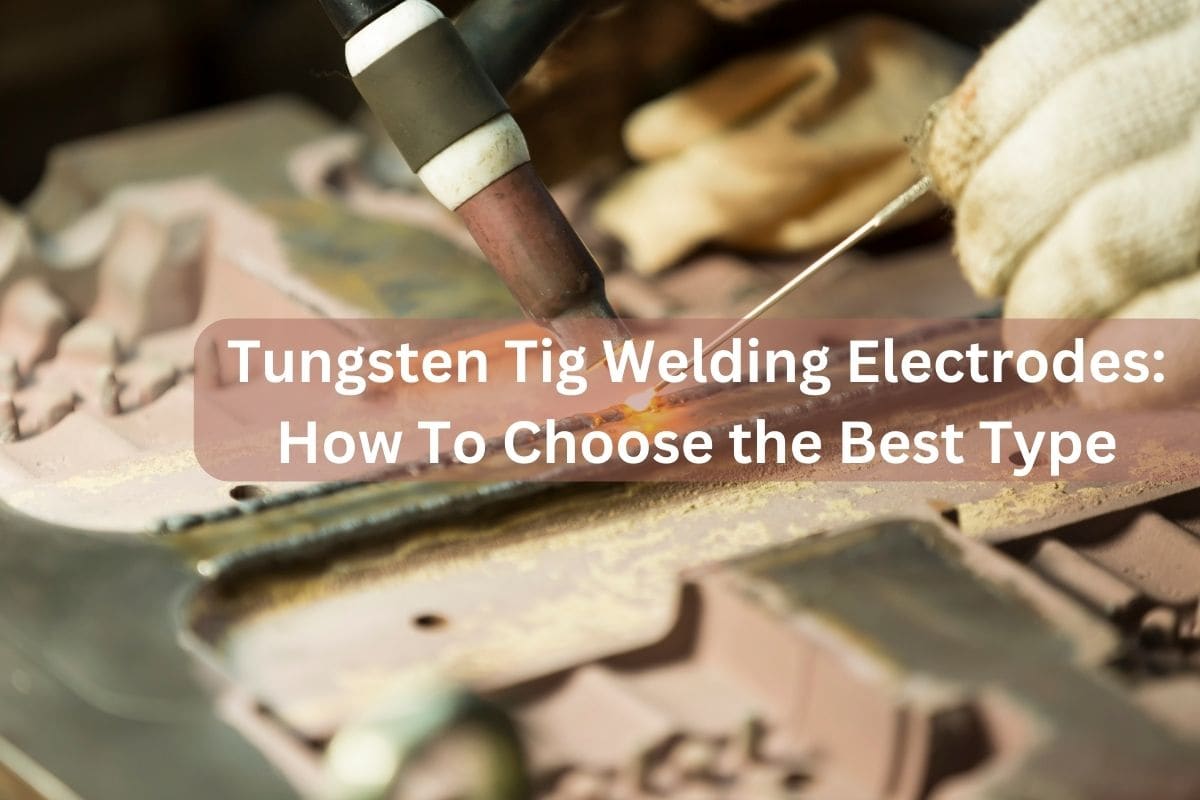Tungsten TIG welding electrodes are the backbone of TIG welding, providing the control and stability needed for precise, high-quality work.
Choosing the right electrode is not a matter of mere preference; it can greatly impact both the quality of your welding and your overall productivity. Let’s dig into this critical component of TIG welding.
Different Types of Tungsten TIG Welding Electrodes
When it comes to TIG welding, choosing the right type of tungsten electrode is more than a box to check off; it’s the cornerstone of quality work.
Each electrode type has its unique set of properties, affecting everything from arc stability to the longevity of the electrode itself.
Pure Tungsten
Pure tungsten electrodes are classic options traditionally used for AC welding, particularly suitable for aluminum and magnesium.
However, they are less robust than their alloyed counterparts, having a lower current-carrying capacity. This makes them more susceptible to “wandering arcs” and contamination of the weld.
Given that pure tungsten electrodes don’t pair well with modern inverter power sources, they are gradually falling out of favor. Inverters usually require electrodes that can sustain higher currents and offer better efficiency.
While pure tungsten is a reliable old-school choice, it may not be the most effective in contemporary setups.
Thoriated (Red, Yellow)
If you are working with DC applications, thoriated electrodes could be your best ally.
With improved arc stability and enhanced resistance to tungsten contamination, these electrodes offer a robust performance. The added thorium enhances electron emission, making your welding task a bit easier and more consistent.
However, thorium is radioactive. While the radioactivity is low, you should still exercise caution, particularly during the grinding process.
It’s advisable to use dedicated grinding equipment and protective masks. And of course, always adhere to your local guidelines on handling radioactive materials.
Ceriated (Grey)
Ceriated electrodes are excellent multitaskers, compatible with both AC and DC welding processes.
They offer easier arc starts and maintain a stable arc, which is a significant advantage, especially for beginners. These electrodes are non-radioactive and exhibit a lower rate of consumption or erosion, extending their lifespan.
Formerly, you would find ceriated electrodes labeled with an orange color code. Now, they are typically grey.
They offer an excellent balance of performance and safety, making them ideal for those who are new to welding or looking for a versatile electrode.
Lanthanated (Black, Gold, Blue)
Lanthanated electrodes are similar to ceriated ones but offer some extra perks.
The addition of lanthanum oxide helps improve their already solid performance in terms of arc starts and stability.
This makes them a strong competitor against thoriated electrodes, especially when you consider that they are non-radioactive.
Among the lanthanated variety, blue electrodes are particularly popular for general-purpose welding.
They can be used in a wide range of applications, making them an excellent choice for both experienced welders and newcomers.
Zirconiated (Brown, White)
Zirconiated electrodes excel in AC welding tasks, especially when you need those welds to be top-notch.
Their unique composition makes them resistant to spatter, even at high amperages. This is particularly useful in applications that require high-quality, spatter-free welds.
However, there is a drawback: zirconiated electrodes are not compatible with DC applications. This limits their versatility but does not negate their effectiveness in specific tasks.
Rare Earth Mix (Purple)
Here’s a blend that brings a little bit of everything to the table. Rare Earth Mix electrodes are formulated with various rare-earth metal oxides, each contributing to the electrode’s overall performance.
They are versatile, often replacing thoriated electrodes without the concern of residual radioactivity.
These electrodes provide stable arcs and can handle a broad range of amperages, making them suitable for a variety of applications.
How Should You Prepare Your Electrodes?
Proper electrode preparation is not a step to be glossed over. It can make a world of difference in the quality of your welds.
The angle at which you grind your electrode determines the shape and stability of the arc. An improper angle can result in a shaky arc and, consequently, a less-than-perfect weld.
You’ll also want to ensure that your grinding lines run longitudinally, or along the length of the tungsten electrode.
This aids in maintaining a stable arc, which in turn contributes to a cleaner, stronger weld.
Safety is paramount. Even if the electrode you’re using is non-radioactive, particles can still pose a respiratory risk.
Always use respiratory protection when grinding your electrodes.
How Much Should the Electrode Stick Out?
How far your electrode should protrude from the Ceramic Gas Shroud is an often-overlooked detail that can substantially impact your weld.
Typically, an optimal stick-out is around 5-6mm, but this can vary depending on what exactly you’re welding.
For example, if you’re working in tight spaces or on intricate pieces, you may need to adjust the stick-out to accommodate.
Always consider the specifics of your welding task and adjust accordingly. A bit of experimentation can go a long way in optimizing your setup for different applications.
Conclusion
Choosing the right tungsten TIG welding electrodes can feel overwhelming, but remember that skill comes with practice.
Whether you opt for thoriated, lanthanated, or zirconiated electrodes, gaining hands-on experience is vital for making the most informed decisions for your specific welding needs.
So don’t get discouraged; keep practicing, and you’ll find the perfect match for your projects.


